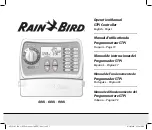
©
National Instruments Corp.
23
NI 9237E Operating Instructions and Specifications
Accuracy
Gain drift........................................... 10 ppm/°C max
Offset drift
2.5 V excitation .......................... 0.6
V/V per °C
3.3 V excitation .......................... 0.5
V/V per °C
5 V excitation ............................. 0.3
V/V per °C
10 V excitation ........................... 0.2
V/V per °C
Measurement Conditions
*
Percent of
Reading
†
(Gain Error)
Percent of
Range
‡
(Offset Error)
Calibrated typ (25 °C, ±5 °C)
0.05%
0.05%
Calibrated max (–40 to 85 °C)
0.20%
0.25%
Uncalibrated typ (25 °C, ±5 °C)
0.20%
0.10%
Uncalibrated max (–40 to 85 °C)
0.55%
0.35%
*
Before offset null or shunt calibration.
†
Applies at a data rate of 50 kS/s. Lower data rates can have up to 0.20%
of reading additional gain error.
‡
Range equals 25 mV/V.














































